Top 11 Viewzone Stories
2012: Doomsday Facts
Dan Eden investigates the hard science behind the real doomsday events.
The Last Doomsday
A scientific look at the last human extinction event 14500 years ago. Will it happen again?
Left Brain:Right Brain
We have two brains that don't always argee and sometimes fight for control. Can facial features shed light on which brain controls our thoughts? Great article by Dan Eden with photographic analysis of many popular figures.
The Color Preference Personality Test
Select your favorite colors and see what this on-line test reveals. Requires JavaScript.
We're Not From Here!
Recent evidence suggests that we are not part of the Milky Way but a dwarf galaxy being assimilated.
Smallpox: The Weapon
A review of what we know about this deadly virus. Is it gone? Really?
How to read eyes!
What do professional interrogators look for to see if you are telling a lie? Can anyone do this?
Decorating with Feng Shui
Nancy Uon gently introduces you to the basics and shows how to best arrange your living space.
Handwriting Analysis
What can be learned about you through your handwriting. Some famous mysteries are described and lessons are given.
Money: what is it?
This Dan Eden article starts with the history of money and describes the current economics that have resulted in the rapidly declining US Dollar.
The Philadelphia Experiment
Did the US Navy succeed in making the US Liberty invisible?
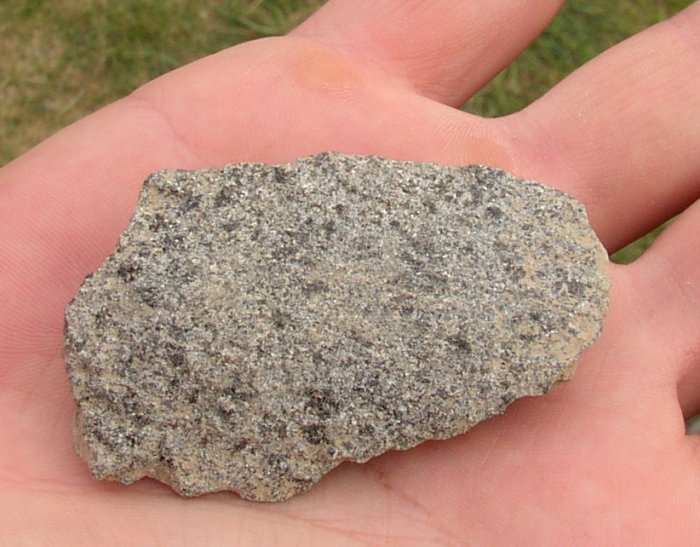 STONEHENGE Bluestones dated to 12,000BC
By Dean Talboys In the 1920s the most extensive excavation and restoration on record was undertaken at Stonehenge offering the opportunity to answer many questions, none least of which was the origin of the so-called "Bluestones".
As petrographer to the Geological Survey, Dr. H. H. Thomas would have
been aware of the distribution of the variety of stones foreign to
Stonehenge (around Great Britain at least) and in 1923 placed their
origin in the Prescelly Mountains, Pembrokeshire, Wales. In his opinion
this location offers not only petrographically identical rocks but also representations of all varieties of the Stonehenge Bluestones in the
immediate neighborhood. Thomas also points to the importance of the area
as one of the richest collections of megalithic remains in Britain which
was brought to his attention by the writings of the late Revd. W. Done
Bushell who describes Prescelly as a 'pre-historic Westminster' and its
southern slopes as 'a land of circles' where exist traces of at least
eight stone circles. Even the sandstone used in the so-called "Altar
Stone" at Stonehenge was traced to an area of coastline in Wales
associated with the Prescelly-Stonehenge route. This is typical of the
totally unscientific way in which the archeological interpretation of
Stonehenge is reinforced. Let's prove Prescelly was the source of the Bluestones by looking for the other foreign stones in the same place!
There are many more examples of such
'scientific license' in
The Stonehenge
Observatory, facts and features which have been overlooked in
the ongoing effort to place Stonehenge in a very British
Neolithic landscape. Yes, the spotted dolerites are almost certainly
from Prescelly but in limiting the search for other stones to this area
they may be missing other important connections. More recently Professors Timothy Darvill and Geoffrey Wainwright have undertaken a minor excavation of Stonehenge in an attempt to provide a date for the arrival of the Bluestones on site. The Profs believe these particular stones were important in Neolithic
times for their medicinal properties and, having mapped quarries in the
Prescelly Mountains, claim that the dolerites (of which the inner oval
of Bluestones at Stonehenge is comprised) derive almost wholly from a
rocky outcrop at the summit of a broad ridge and the rhyolites and tuffs
(which together with dolerites are found in the outer Bluestone circle)
appear in the surrounding volcanic dykes. The petrology may be beyond
doubt but the healing quality of these stones is not. In 25 years of
studying the region, local expert and internationally published author,
Robin Heath, has never come across any firm evidence to suggest that the
Bluestones were revered in recorded history, let alone prehistory, as
having healing properties any more than other wells across the British
Isles and cites a local farmer in challenging Wainwright's 'extensive
research' of the aforementioned dolerite outcrop (2). The Profs failed
in the search for a date but did open the lid on another archeological
oversight covered in
The
Stonehenge Observatory - the site has been subjected to major
re-orderings in the past which casts doubt on its age. If Prescelly is the source of the
stones the next question must be, Even if the 4 ton stones were imbued with magical powers it still does not answer the question why anyone would want to transport eighty of them over a distance of at least 140 miles when it is clear that the Prescelly 'land of circles' already offered extensive health facilities. Did they represent the spoils of war to invaders from Salisbury (a battle I would have lost willingly at the thought of taking the prize home)? A legend of stones having been erected in memory of soldiers fallen in battle is credited to Geoffrey of Monmouth, a 12th century clergyman obsessed with the wizard, Merlin. These stones, originally from Africa, were brought by magic from their current location on Mount Killaraus in Ireland to Stonehenge. From his description of their size it would appear the author is referring to the massive Sarsen stones, however, he also claims that their original use was in curing ills (by bathing in water that had been poured over the stones) which ties in with the Bluestone's medicinal powers. Bluestone was also used extensively in the production of axe heads and battle axes, and dolerite in general was popular as far afield as Egypt where it was used to make tools, but if Bluestone was prized for anything more than this could we not expect to see more evidence of its use at other prehistoric sites? Stanton Drew in Somerset (on the route from Prescelly), The Rollrights in Oxfordshire, Lamorna in Cornwall and Arbor Low in Derbyshire are all (more or less) as close to the Prescelly Hills as Stonehenge yet contain only locally acquired granite, limestone and shale. Neither is there evidence of Bluestone having been used in the construction of neighboring Neolithic sites at Silbury, Avebury or Durrington Walls -- not even a token altar stone. Whatever the reason for their presence the Bluestones serve as yet another feature to set Stonehenge apart from every other megalithic site. This does not seem to matter to archeologists who have decided the period in which Stonehenge belongs and again, as with every other feature unique to the site, all subsequent research has been directed to proving Neolithic Man capable of its construction, in this case, the transportation of Bluestones from Prescelly using the most rudimentary of vessels (again without success). According to Professor Olwen Williams-Thorpe there is little evidence to support the use of anything but local stone in the construction of megalithic structures (3). She supports the idea, originally put forward by Professor J. W. Judd in 1901, that the Bluestones were ripped from their beds and deposited by glaciers (4), however, it is a view widely disputed by geologists and archeologists. D. Q. Bowen, Professor of Earth Sciences at Cardiff University, used Chlorine-36 dating to show how at least one sample of igneous rock from Stonehenge was first exposed to the air 14,000 years ago (5). This contradicts heavily the retreat of glaciers from Salisbury Plain from which we could expect a date more in the region of 400,000 years. Thorpe and colleagues were quick to respond (6); Chlorine-36 dating gives an estimate of the length of time that a rock surface has been exposed to the atmosphere, by measuring the amount of Chlorine-36 produced by exposure of the rock to cosmic radiation. If the rock or surface has been covered or buried, the date obtained will reflect the reduced time of exposure to air. Thus a Chlorine-36 date may reflect either recent exposure of a surface due to processes such as frost shattering, or an original exposure date. Bowen also sampled the surfaces of outcrops at Carn Menyn, the 'known' source of dolerites in Prescelly, returning dates one thousand years before the Bluestones are supposed to have arrived at Stonehenge. What does this mean?
The lack of any activity at the Prescelly quarry before, during and
after construction of Stonehenge combined with the very early date of a
sample from the site is clear indication of the
Bluestone’s use in another, much earlier setting.
The site was chosen for its geographical similarity to the original location of the Bluestones at Dowth in Ireland. This henge, overlooked by every other author on the subject of Stonehenge, is also set on the northeast face of a gently sloping hill close to a river (the Boyne). Its bank remains intact at a width of 6m (20ft) and height of 3-4m (13ft), the same dimensions as the original bank at Stonehenge, and, like Stonehenge, is punctuated by an entrance at the northeast. Perhaps there is an element of truth in the legend of Merlin and the Stones, after all, legends are usually corruptions of the truth over a long period of time, but did the stones originate from Africa? Well, only an archeologist would deny it outright without proof! Ironically, the Dowth henge is as close to Prescelly as is Stonehenge and on a route that can be traversed almost entirely by water. Another possible source of stone closer to Dowth and equally accessible by sea is Slieve Foye, a mountain of igneous outcrops behind the coastal town of Carlingford, 40km to the north. Has it been the subject of 'extensive research'?
Read the full explanation of why the Bluestones were moved from Dowth to
Stonehenge over 13,000 years ago in the remarkable book, Topology is not the only reason for choosing Stonehenge as a site for the relocated Bluestone structure. The most important factor restricted possible locations to within a zone no more than 1-2km (1 mile) north or south of the latitude of Dowth. 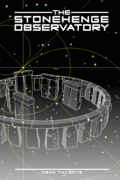 New! Stonehenge Stones Cast Serious Doubt over
http://www.stonehengeobservatory.com
Dean Talboys is a consultant systems analyst. His book, The Stonehenge Observatory, is available for immediate download in PDF format from the web site. The printed version is due for release in the coming months. |

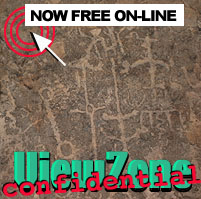
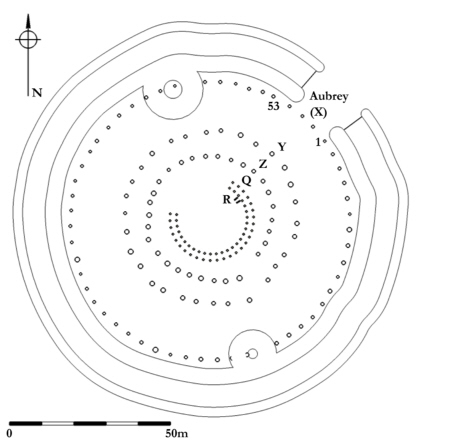 [Left: Stonehenge Post and Stone Holes from The Stonehenge Observatory]
[Left: Stonehenge Post and Stone Holes from The Stonehenge Observatory]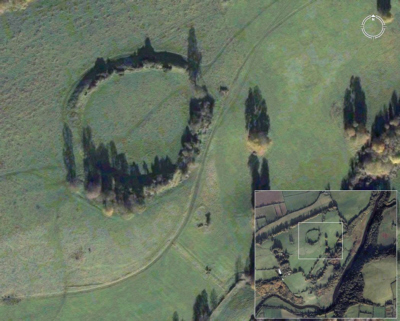 [Right: Aerial view of Dowth Site Q composed from Google Earth]
[Right: Aerial view of Dowth Site Q composed from Google Earth]